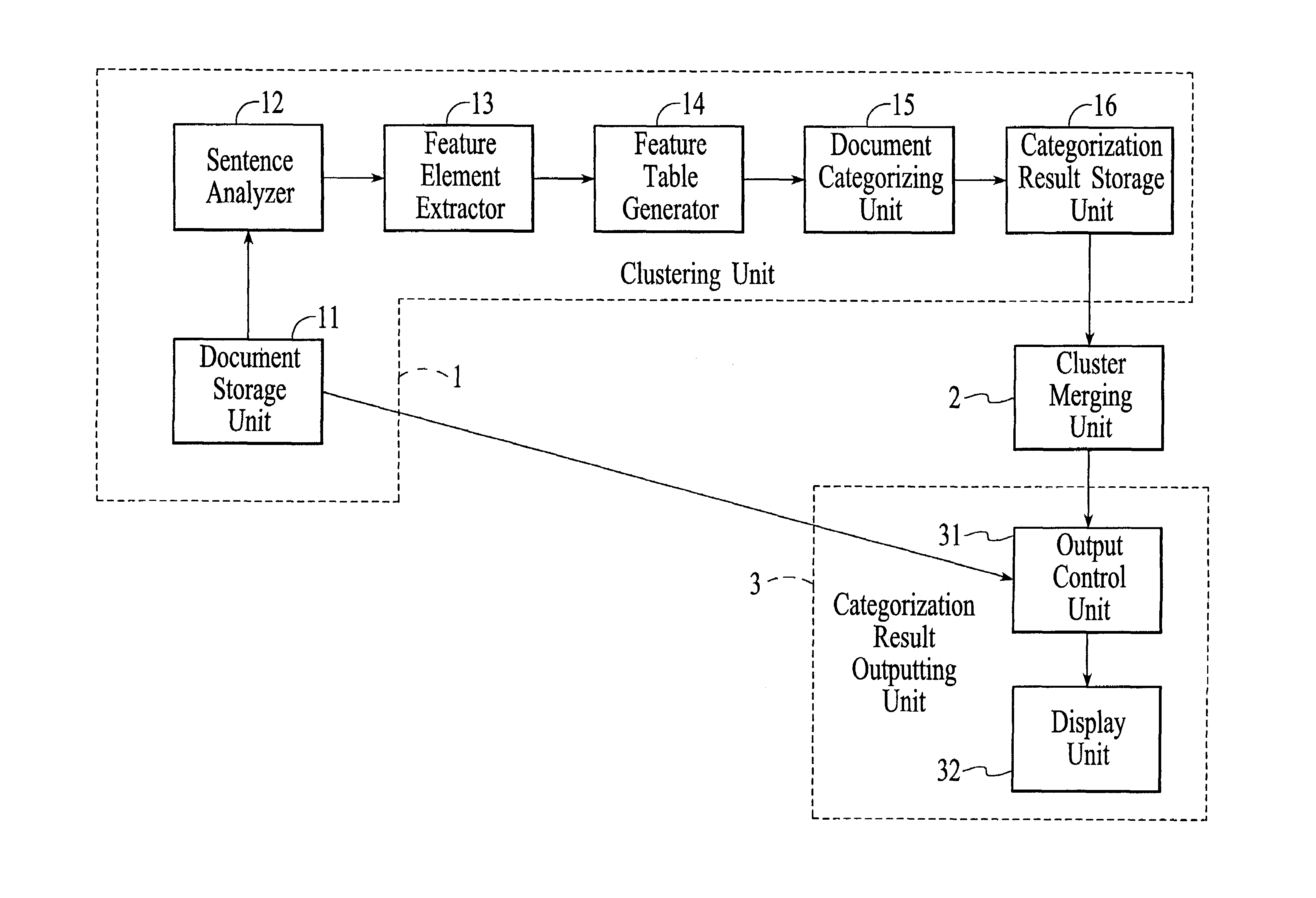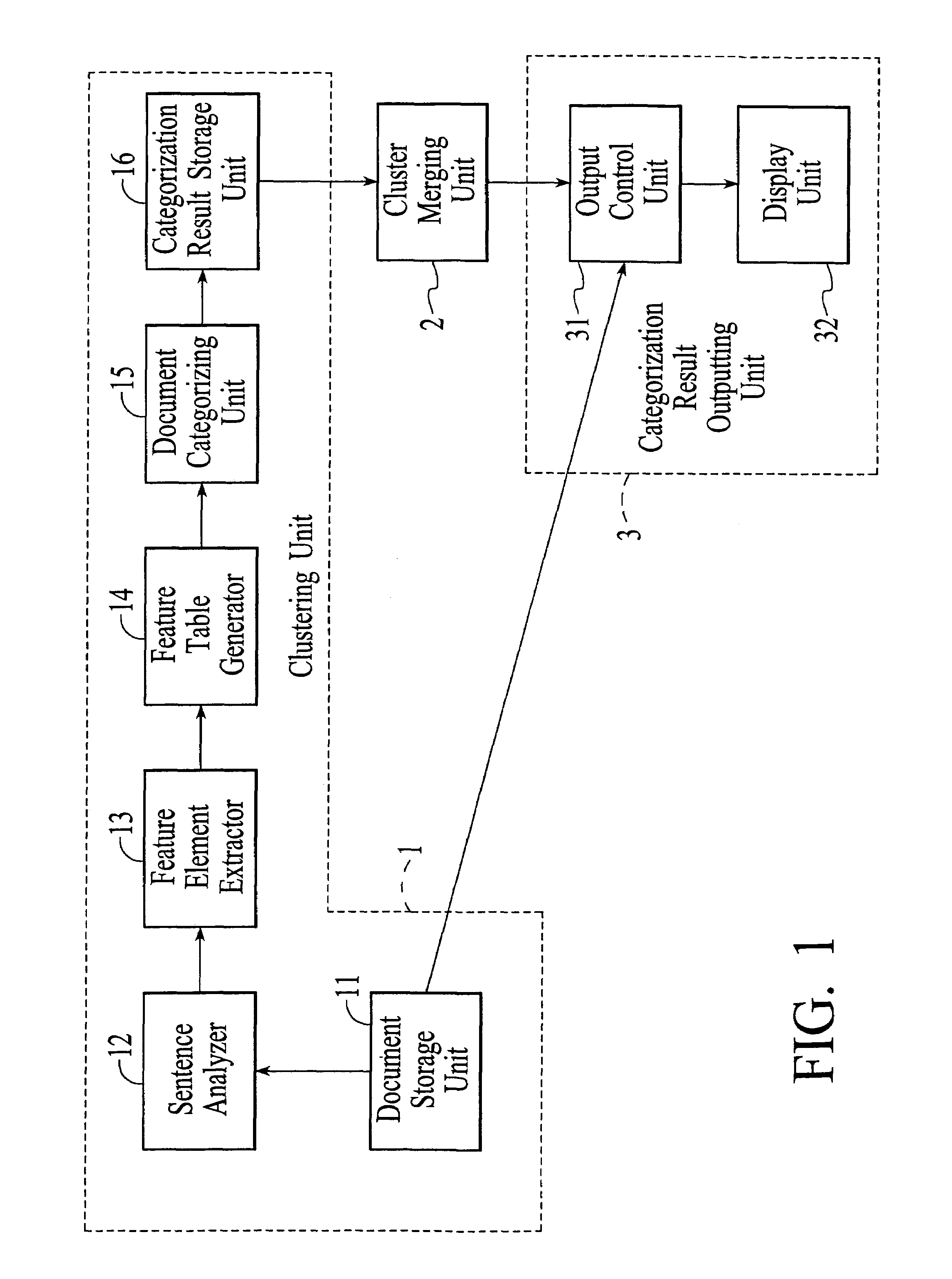Document categorizing method, document categorizing apparatus, and storage medium on which a document categorization program is stored
a document categorization and document technology, applied in the field of document categorization methods, document categorization apparatuses, and storage media, can solve the problems of large cpu load, complicated processing of morphological analysis and extraction of feature elements, and often meaningless resultant categorization results
- Summary
- Abstract
- Description
- Claims
- Application Information
AI Technical Summary
Benefits of technology
Problems solved by technology
Method used
Image
Examples
first embodiment
[0048]A first embodiment of the present invention is described below. Note that the technique described herein can be applied not only to a document categorizing method and a document categorization apparatus according to the present invention but also to a document categorization program stored on a storage medium according to the present invention.
[0049]In the present embodiment, titles are first extracted from respective documents, then feature elements are extracted from the titles, and finally the document is categorized according to the extracted feature elements.
[0050]FIG. 1 illustrates the structure of the apparatus according to the present embodiment. As shown in FIG. 1, the apparatus consists mainly of a clustering unit 1 for categorizing a plurality of documents into a plurality of clusters in accordance with semantic similarity, a cluster merging unit 2 which evaluates the relation among the plurality of clusters created by the clustering unit 1 on the basis of the docum...
second embodiment
[0116]When merged clusters are presented to a user, if only the final result of the cluster merging process is presented and no information about the cluster merging process is presented, the user cannot know which clusters have been combined together into final clusters and cannot know the degree of relation among the original clusters combined together into the final clusters.
[0117]In the present embodiment, to solve the above problem, when final clusters, which are obtained through the cluster merging process in which clusters having close relations are combined together, are displayed, the clusters are displayed in a manner that allows a user to see which clusters have been combined together into which final clusters and also see the degrees of relation among the clusters combined together.
[0118]The second embodiment of the present invention is described in further detail below.
[0119]In this second embodiment, categorization of documents is performed, as described above, by firs...
PUM
 Login to View More
Login to View More Abstract
Description
Claims
Application Information
 Login to View More
Login to View More - R&D
- Intellectual Property
- Life Sciences
- Materials
- Tech Scout
- Unparalleled Data Quality
- Higher Quality Content
- 60% Fewer Hallucinations
Browse by: Latest US Patents, China's latest patents, Technical Efficacy Thesaurus, Application Domain, Technology Topic, Popular Technical Reports.
© 2025 PatSnap. All rights reserved.Legal|Privacy policy|Modern Slavery Act Transparency Statement|Sitemap|About US| Contact US: help@patsnap.com



